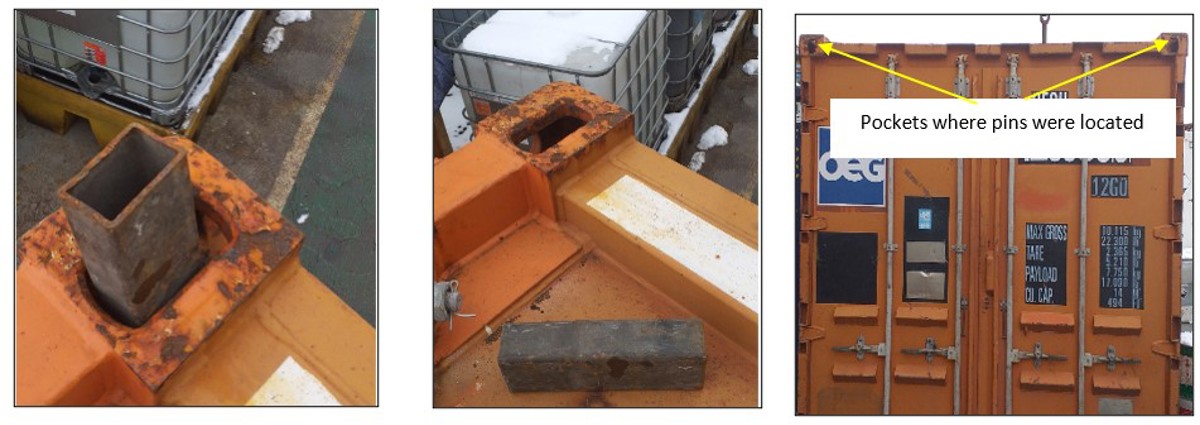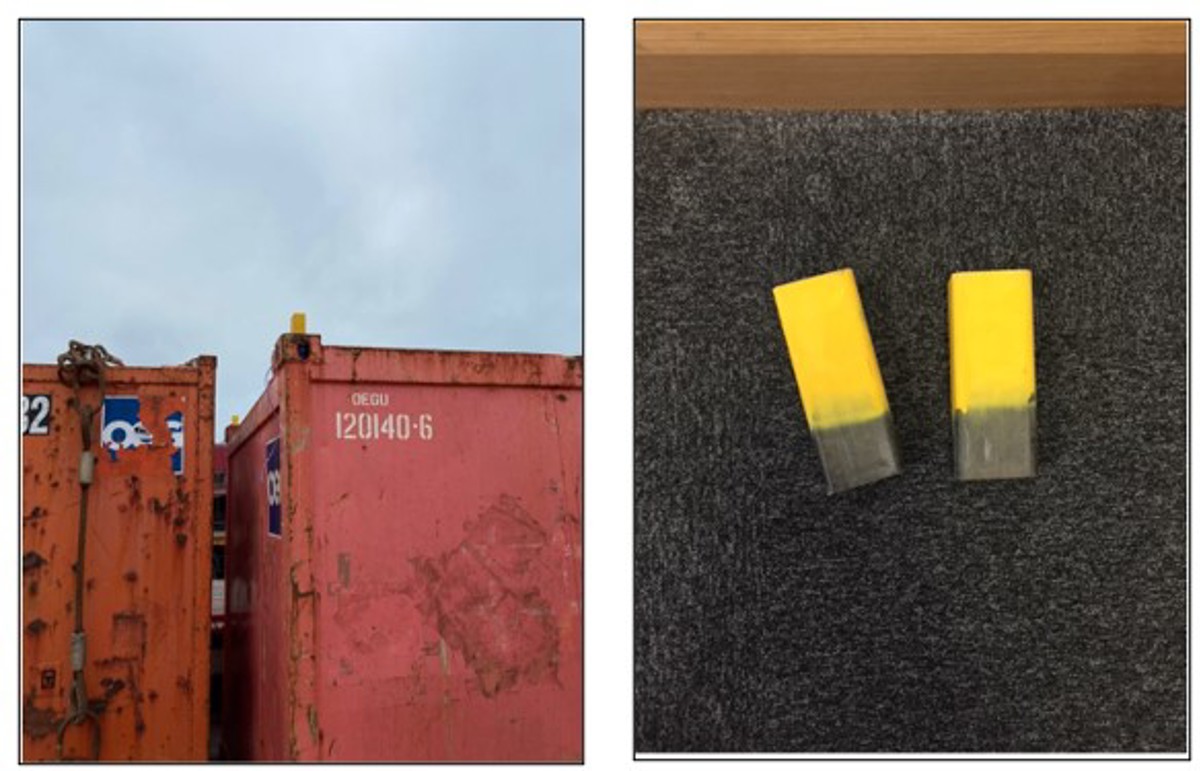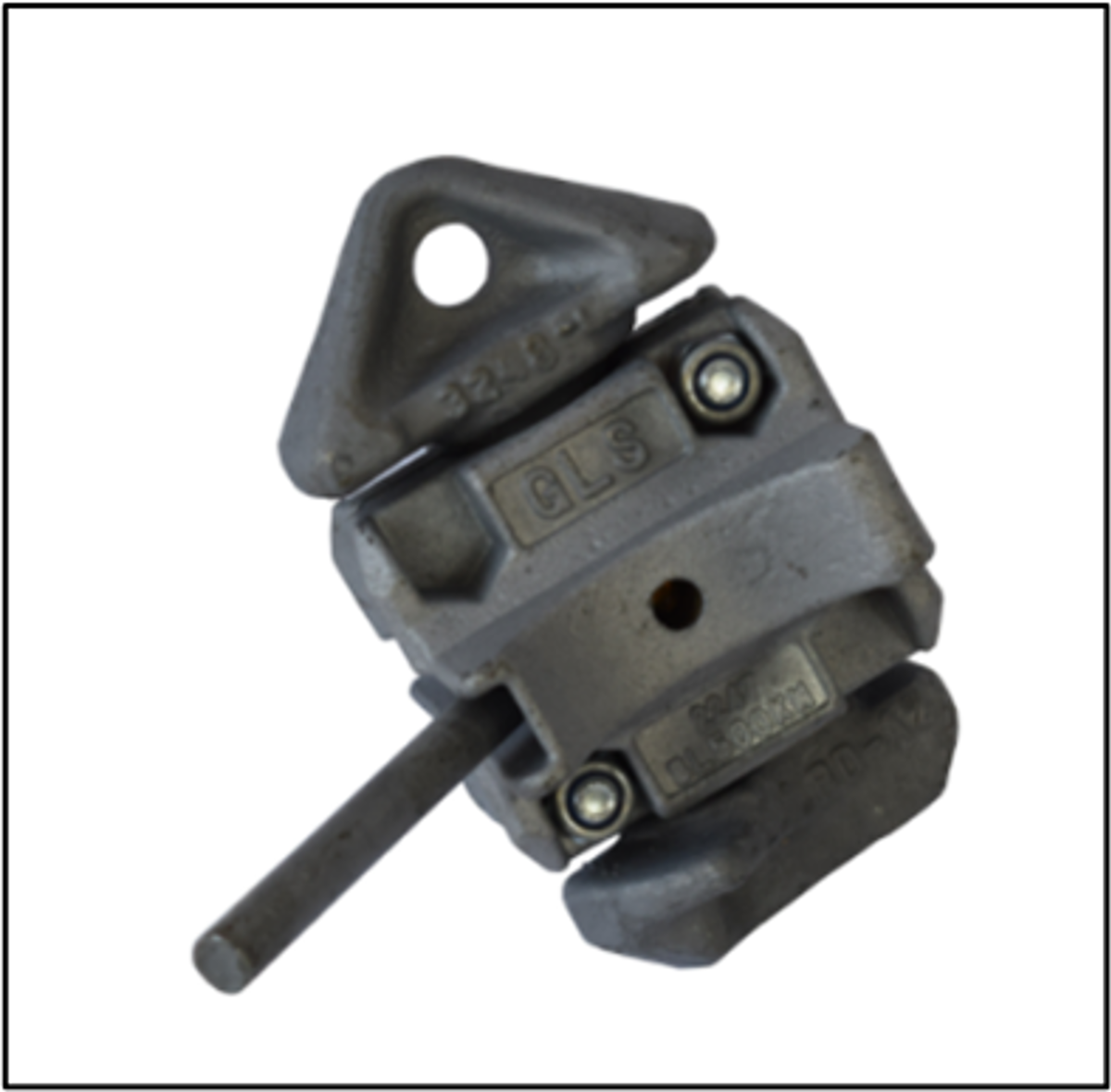Potential dropped object from container
- Safety Flash
- Published on 27 April 2021
- Generated on 15 December 2025
- IMCA SF 12/21
- 1 minute read
Jump to:
Before backloading a container from rig to vessel, it was noted that there were two metal blocks in the top corner pockets of the container.
What went wrong?
Findings: The blocks were loose metal blocks size of approximately 12 cm by 5 cm weighing between 1.6 and 2 kg each.
The container had undergone two lifts coming to the rig and was just about to be lifted off the rig when the blocks were noticed whilst carrying out pre-load out checks.
The blocks were found to be stacking guides used in the yard when stacking containers.
There was potential for serious injury had the blocks become dislodged during a lift, and also potential for severe injury to personnel in surrounding vehicles and/or pedestrians if the blocks had become dislodged and fallen during transit on the public highway from the yard to the quayside.
Actions
- Stacking pins now painted in contrasting visible colour for easy identification.
- Additional spot checks and verification checks on all containers before load-out.
- Use a twist lock such as that illustrated here:
Members may wish to review:
- Standard Club's A Master’s guide to container securing, 3rd edition
Related Safety Flashes
-
IMCA SF 17/19
16 July 2019
-
-
IMCA SF 11/18
4 June 2018
-
-
IMCA SF 04/18
20 February 2018
-
IMCA Safety Flashes summarise key safety matters and incidents, allowing lessons to be more easily learnt for the benefit of the entire offshore industry.
The effectiveness of the IMCA Safety Flash system depends on the industry sharing information and so avoiding repeat incidents. Incidents are classified according to IOGP's Life Saving Rules.
All information is anonymised or sanitised, as appropriate, and warnings for graphic content included where possible.
IMCA makes every effort to ensure both the accuracy and reliability of the information shared, but is not be liable for any guidance and/or recommendation and/or statement herein contained.
The information contained in this document does not fulfil or replace any individual's or Member's legal, regulatory or other duties or obligations in respect of their operations. Individuals and Members remain solely responsible for the safe, lawful and proper conduct of their operations.
Share your safety incidents with IMCA online. Sign-up to receive Safety Flashes straight to your email.


